The Annapurna Base Camp Trekking experience stands out for its remarkable combination of natural beauty and cultural richness. Trekkers find themselves navigating through picturesque Gurung and Magar villages, lush forests, and awe-inspiring mountain landscapes, all while adjusting to the altitude. With various accommodation options available and essential gear recommendations, preparing for this journey becomes manageable. Yet, beneath the surface of this adventure lies a wealth of local traditions and vibrant community interactions that often surprise even seasoned travelers. What awaits in these villages might just redefine one’s understanding of trekking in Nepal.
Good To Know
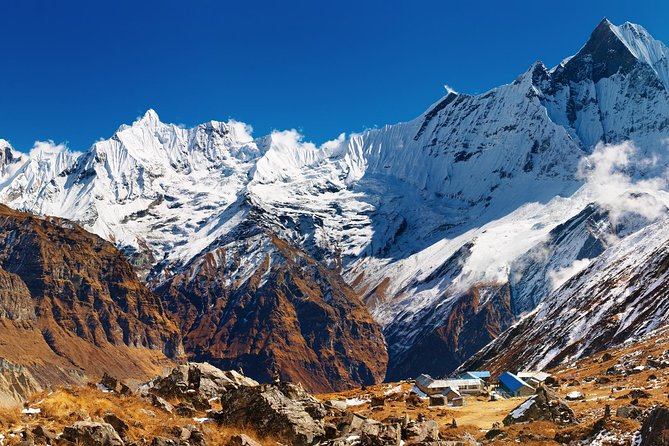
- The Annapurna Base Camp trek reaches an altitude of 4,130 meters, offering breathtaking mountain vistas and diverse wildlife encounters.
- The trek combines adventure with culture, featuring vibrant Gurung and Magar villages along the route.
- Key highlights include a sunrise hike to Poon Hill and stunning views of the Dhaulagiri and Annapurna ranges.
- Accommodation options range from basic teahouses to luxury lodges, catering to various preferences and budgets.
- Essential gear includes sturdy trekking boots, warm clothing, and a well-stocked first-aid kit for safety and comfort.
It's also worth checking out some other tours and experiences nearby.
Overview of the Trek
The Annapurna Base Camp trek offers adventurers a breathtaking journey through the heart of the Himalayas, combining stunning natural beauty with rich cultural experiences.
This classical trek in Nepal reaches an impressive height of 4,130 meters, showcasing tranquil landscapes and vibrant Gurung and Magar villages. Hikers can enjoy the colorful Rhododendron blooms and traverse lush bamboo and alpine forests.
As they trek, they’ll encounter diverse wildlife and breathtaking mountain vistas. The journey culminates at Annapurna Base Camp, where trekkers can savor a peaceful atmosphere while surrounded by majestic peaks.
This trek is perfect for those seeking both adventure and a deeper understanding of the local culture, making it a must-do for outdoor enthusiasts.
Detailed Itinerary
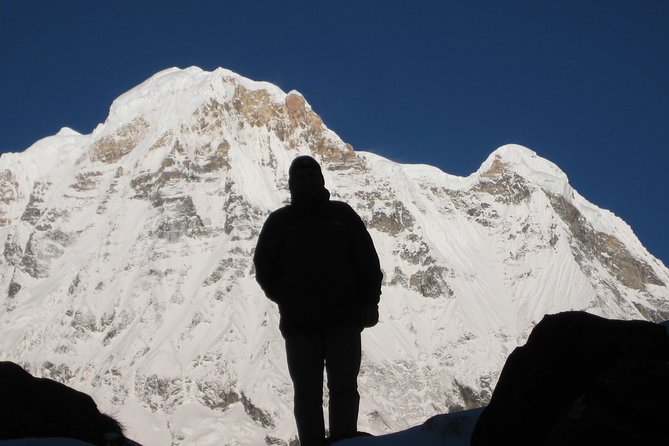
Adventurers embarking on the Annapurna Base Camp trek will find a well-structured itinerary that guides them through a variety of stunning landscapes and cultural experiences.
This detailed plan ensures trekkers make the most of their journey, featuring:
-
Days 1-3: Arrival in Kathmandu, sightseeing, and travel to Pokhara.
-
Days 4-9: Trekking from Pokhara to Annapurna Base Camp, with highlights like Poon Hill’s sunrise.
-
Days 10-14: The return journey includes a visit to hot springs and a farewell dinner in Kathmandu.
-
Accommodation and Services: Comfortable guesthouses during the trek and included meals.
This itinerary balances adventure with culture, making it a memorable experience for all who participate.
Trekking Routes and Scenery
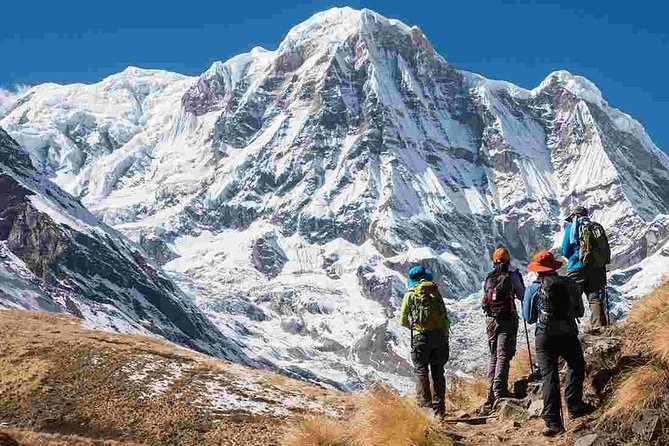
Embarking on the Annapurna Base Camp trek, trekkers encounter a variety of breathtaking routes that showcase Nepal’s diverse landscapes.
The journey begins with charming villages like Ulleri, where oak and rhododendron forests thrive. As they ascend to Ghorepani, panoramic views of the Dhaulagiri and Annapurna ranges unfold, captivating every traveler.
Early risers hike to Poon Hill for a stunning sunrise, setting a magical tone for the trek. Continuing to Tadapani and Chhomrong, trekkers are surrounded by lush bamboo forests and impressive mountain vistas.
Each day, the changing scenery—from vibrant rhododendrons to majestic peaks—offers a fresh perspective and a deeper connection to nature, ensuring an unforgettable trekking experience as they approach their ultimate destination: Annapurna Base Camp.
Accommodation Options
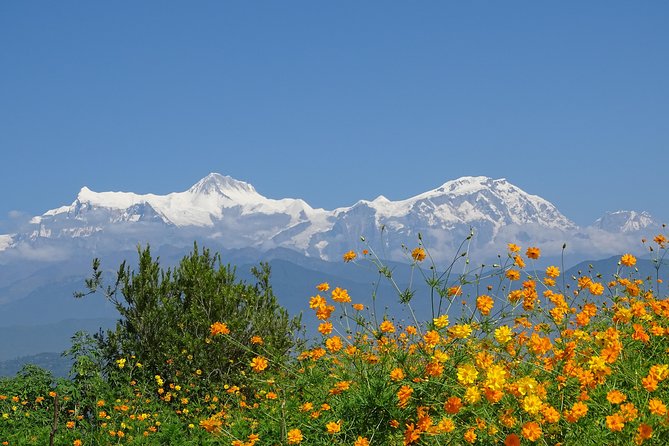
As trekkers make their way through the stunning landscapes of the Annapurna region, they can look forward to a variety of accommodation options that enhance their experience.
Most trekkers stay in teahouses, which offer a cozy and friendly atmosphere. These guesthouses provide essential amenities while allowing trekkers to connect with locals and fellow adventurers.
Here are some common accommodation options:
- Teahouses: Basic lodgings with shared facilities and meals.
- Guesthouses: Comfortable stays with private rooms and hot showers.
- Camping: For those seeking a more adventurous experience, camping is also an option.
- Luxury lodges: For a taste of comfort, some areas offer upscale lodges with modern amenities.
Each option caters to different preferences, ensuring everyone finds a suitable place to rest.
Essential Gear and Packing List
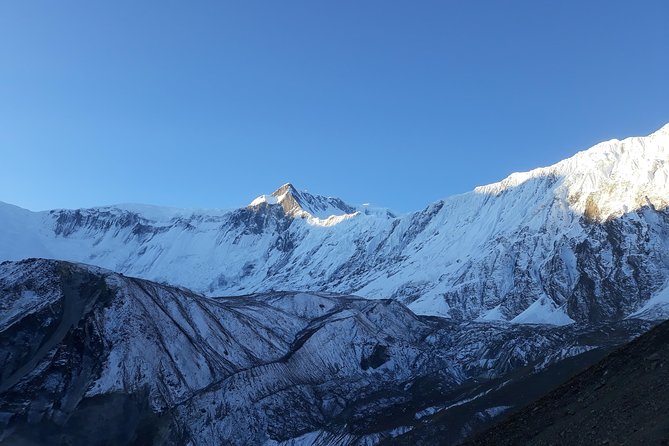
When planning for the Annapurna Base Camp trek, having the right gear is crucial to ensure comfort and safety throughout the journey.
Trekkers should pack a good-quality backpack, sturdy trekking boots, and warm clothing, including thermal layers and a waterproof jacket. A sleeping bag rated for cold temperatures is essential, as nights can get chilly at higher altitudes.
Don’t forget trekking poles for added stability and a first-aid kit for minor injuries. A reusable water bottle and purification tablets will keep hydration manageable.
Lastly, bring a headlamp for early mornings and late evenings, plus sunscreen and sunglasses to protect against high-altitude sun exposure.
With this essential gear, trekkers can fully enjoy the stunning landscapes and experiences along the trail.
Health and Safety Tips
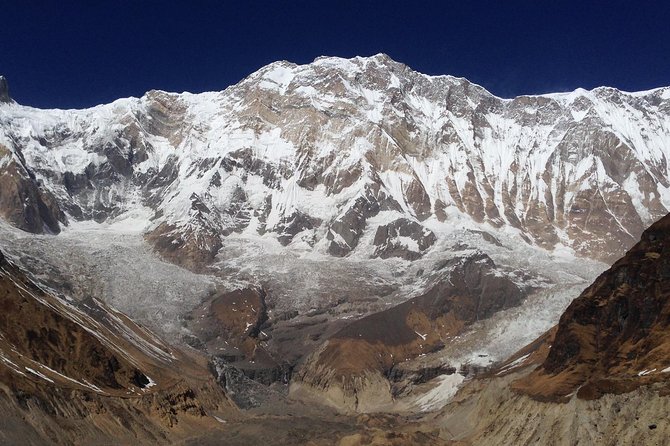
Trekking to Annapurna Base Camp involves navigating diverse terrains and varying altitudes, making health and safety precautions essential.
It’s crucial for trekkers to prioritize their well-being to enjoy this adventure fully. Here are some key tips to keep in mind:
-
Acclimatize properly: Ascend gradually and allow time for your body to adjust to higher altitudes.
-
Stay hydrated: Drink plenty of water to avoid altitude sickness and maintain energy levels.
-
Pack a first-aid kit: Include essentials like band-aids, pain relievers, and altitude sickness medication.
-
Listen to your body: If you feel unwell or overly fatigued, don’t hesitate to rest or descend.
Local Culture and Villages
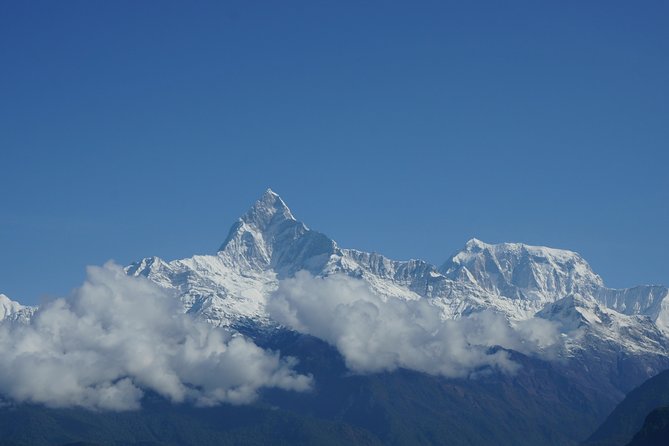
Exploring the local culture and villages along the Annapurna Base Camp trek offers trekkers a unique glimpse into the rich traditions and lifestyles of the Gurung and Magar communities.
These villages, like Ghandruk and Chhomrong, showcase traditional wooden houses and vibrant festivals, reflecting a strong sense of community.
Trekkers often enjoy local hospitality, sampling authentic dishes like dal bhat and momo while engaging in conversations with friendly locals.
The cultural practices, such as farming and weaving, are still integral to daily life.
On top of that, ancient customs and rituals are evident in local temples and during celebrations, providing deeper insights into the enduring heritage of these communities.
This culture enhances the trekking experience, making it truly memorable.
Testimonials and Experiences
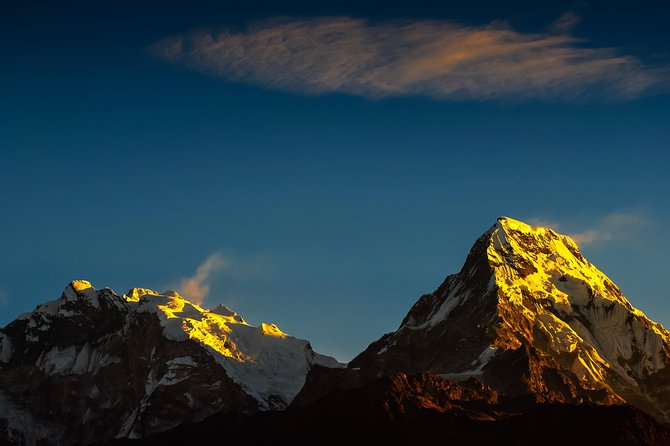
Trekkers often share their experiences of the Annapurna Base Camp journey, highlighting the warmth of the local communities and the breathtaking landscapes they encounter.
Many express their awe at the towering peaks, while others appreciate the camaraderie formed along the trail. Here are some common themes from their testimonials:
-
The stunning sunrises viewed from Poon Hill leave trekkers speechless.
-
Local hospitality, often described as genuine and welcoming, enhances the overall experience.
-
Guides’ extensive knowledge enriches the trek, providing insights into the region’s culture and nature.
-
The diverse flora and fauna, particularly during spring, captivate nature lovers.
These experiences illustrate why the Annapurna Base Camp trek remains a cherished adventure for many travelers.
Here's a few more nearby tours and experiences we think you'll like.
Frequently Asked Questions
What Is the Best Time to Trek to Annapurna Base Camp?
The best time to trek is during spring and autumn. In these seasons, the weather’s mild, trails are clear, and the views are stunning, making it ideal for trekkers seeking a memorable adventure.
Are Permits Required for the Annapurna Base Camp Trek?
Yes, permits are required for the trek. Travelers typically need the Annapurna Conservation Area Permit and the Trekkers’ Information Management System card. They can obtain these permits in Pokhara or Kathmandu before starting their journey.
How Challenging Is the Annapurna Base Camp Trek for Beginners?
For beginners, the trek’s moderate difficulty offers a rewarding experience. Though it includes steep ascents and varying terrains, with proper preparation and gradual acclimatization, most can enjoy its stunning landscapes without feeling overwhelmed.
What Type of Food Is Available During the Trek?
During the trek, hikers enjoy a variety of foods, including local dishes like dal bhat, noodles, and soups. They often find fresh vegetables, fruits, and snacks along the way, ensuring balanced nutrition throughout their journey.
Can I Hire a Porter for the Annapurna Base Camp Trek?
Yes, travelers can hire a porter for their trek. Porters help carry heavy loads, making the journey easier and more enjoyable. Most trekking companies offer porter services, ensuring a smoother experience for everyone involved.
Not for you? Here's more of our most recent tour reviews happening neaby
- 12-Day Private Tour: Budget Manaslu Circuit Trek
- Everest Base Camp Trek- 13 Days
- Trekkers & Hikers Spa Package by Heritage Spa
- Annapurna Base Camp Trekking – 14 Days
- Mera Peak Climbing
- 11 Days Private Nepal and Bhutan Tour
- Langtang Valley Trek
- Goisankunda, Trek of the Holy Lakes
- Nagarkot Sunrise View and Day Hiking From Kathmandu,Nepal
- Evening Photography Tour of Kathmandu
- Bhaktapur – Nagarkot Day Tour
- Dhulikhel to Namo Buddha Hiking via Crossing Local Village
- Nagarkot Day Trip
- Kathmandu Valley Sightseeing Day Tour
- Kathmandu: Nepali Cooking Class & Momo Making With Pickup
The Sum Up
To sum it up, the Annapurna Base Camp Trekking is more than just a hike; it’s a journey through stunning landscapes and vibrant cultures. Trekkers can expect unforgettable experiences, from the warm hospitality of local villages to breathtaking mountain views. With careful planning and the right gear, anyone can embark on this adventure. Whether you’re seeking solitude in nature or a taste of local life, this trek offers something for all, ensuring memories that’ll last a lifetime.
